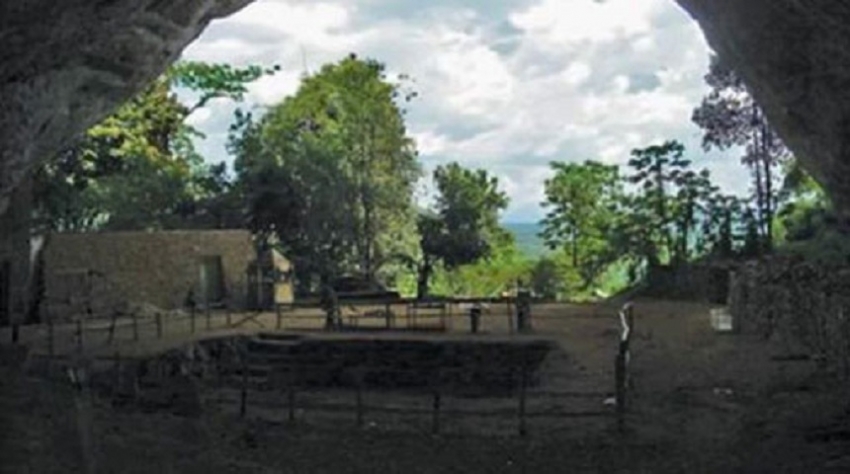The tools found at the Fa Hien cave site suggest humans were settled and living in the region’s rainforests, hunting monkeys and other tree-dwelling mammals for food.Griffith University expert Dr Michelle Langley said that indicated a level of sophistication beyond what was previously attributed to the early humans who came through that part of the world during the great migration of humanity across the globe.
“Rainforests have always been thought to be too hard for people to have tackled that early on,” Dr Langley said.“The resources are quite difficult to get at, the animals that are there in the trees are difficult to get, they aren’t the large animals you get in the savannahs.“Most people have previously thought (humans) had gone around rainforests until much later.”
The researchers found evidence of prolonged human settlement in the region, evidenced by the large number of bones from monkeys which had been butchered by those early humans.“Hunting monkeys is very difficult - they live in the trees far above where humans are, they’re very fast, very agile and very smart,” Dr Langley said.
“They’re not the kind of animal where you can just grab them, it takes quite sophisticated technology to get up to them and hunt them.”Dr Langley is a specialist in analysing ancient bone tools, and looked at several small bone spikes believed to have been used as spear or arrow heads.
It appears the ancient humans also used canine teeth from the monkeys they hunted as tools, turning them into pointed tools for piercing and cutting.The people moving through the Sri Lankan rainforest 45,000 years ago were modern humans, meaning they would have been physically the same as people living today.
Dr Langley said the findings showed a population of people using human ingenuity to get the most out of a harsh environment without any of the benefits of the subsequent 45,000 years of technological advances. “The good thing about modern humans is we’re very flexible in our behaviours, so put us in a situation and we’ll work out very quickly how to live there,” she said.
“They’ve arrived [in the region] early on and they’ve stuck around, so they’ve worked out how to make a living there and not seen any reason to leave, so they seem to be quite comfortable.”In addition to Dr Langley and the Griffith team, the project involved researchers from Sri Lanka’s University of Sri Jayewardenepura, as well as an international group from universities including Oxford University and the University of Queensland.The findings were published on Wednesday in the journal Nature Communications. Source: Brisbane TimesTools left behind by ancient humans in the rainforests of Sri Lanka 45,000 years ago have helped Australian scientists rewrite the history of human migration through the region. Experts from Griffith University’s Australian Research Centre for Human Evolution have been working with Sri Lankan researchers who have uncovered bone and stone tools at the oldest archaeological site occupied by humans in the country.
The tools found at the Fa Hien cave site suggest humans were settled and living in the region’s rainforests, hunting monkeys and other tree-dwelling mammals for food.Griffith University expert Dr Michelle Langley said that indicated a level of sophistication beyond what was previously attributed to the early humans who came through that part of the world during the great migration of humanity across the globe.
“Rainforests have always been thought to be too hard for people to have tackled that early on,” Dr Langley said.“The resources are quite difficult to get at, the animals that are there in the trees are difficult to get, they aren’t the large animals you get in the savannahs.“Most people have previously thought (humans) had gone around rainforests until much later.”
The researchers found evidence of prolonged human settlement in the region, evidenced by the large number of bones from monkeys which had been butchered by those early humans.“Hunting monkeys is very difficult - they live in the trees far above where humans are, they’re very fast, very agile and very smart,” Dr Langley said.
“They’re not the kind of animal where you can just grab them, it takes quite sophisticated technology to get up to them and hunt them.”Dr Langley is a specialist in analysing ancient bone tools, and looked at several small bone spikes believed to have been used as spear or arrow heads.
It appears the ancient humans also used canine teeth from the monkeys they hunted as tools, turning them into pointed tools for piercing and cutting.The people moving through the Sri Lankan rainforest 45,000 years ago were modern humans, meaning they would have been physically the same as people living today.
Dr Langley said the findings showed a population of people using human ingenuity to get the most out of a harsh environment without any of the benefits of the subsequent 45,000 years of technological advances. “The good thing about modern humans is we’re very flexible in our behaviours, so put us in a situation and we’ll work out very quickly how to live there,” she said.
“They’ve arrived [in the region] early on and they’ve stuck around, so they’ve worked out how to make a living there and not seen any reason to leave, so they seem to be quite comfortable.”In addition to Dr Langley and the Griffith team, the project involved researchers from Sri Lanka’s University of Sri Jayewardenepura, as well as an international group from universities including Oxford University and the University of Queensland.The findings were published on Wednesday in the journal Nature Communications. Source: Brisbane Times
Humans tamed Sri Lankan jungle 45,000 years ago - Research
February 24, 2019
Tools left behind by ancient humans in the rainforests of Sri Lanka 45,000 years ago have helped Australian scientists rewrite the history of human migration through the region. Experts from Griffith University’s Australian Research Centre for Human Evolution have been working with Sri Lankan researchers who have uncovered bone and stone tools at the oldest archaeological site occupied by humans in the country.




















